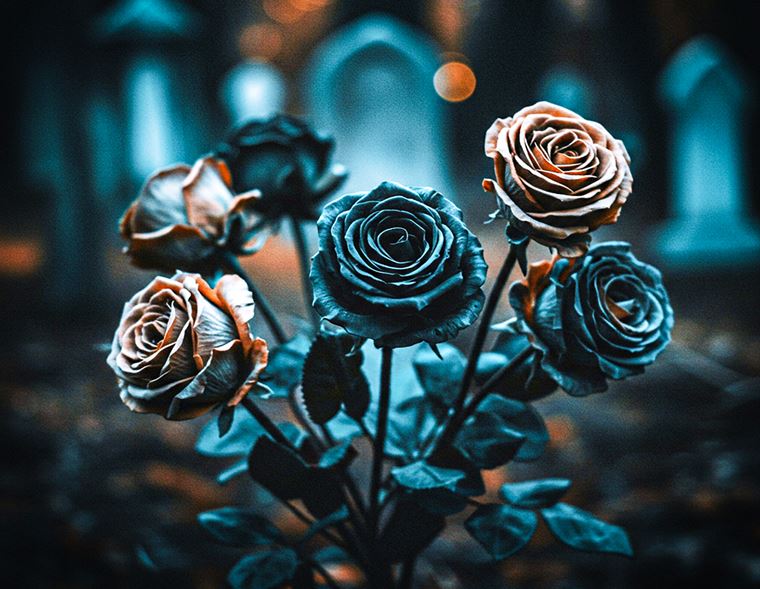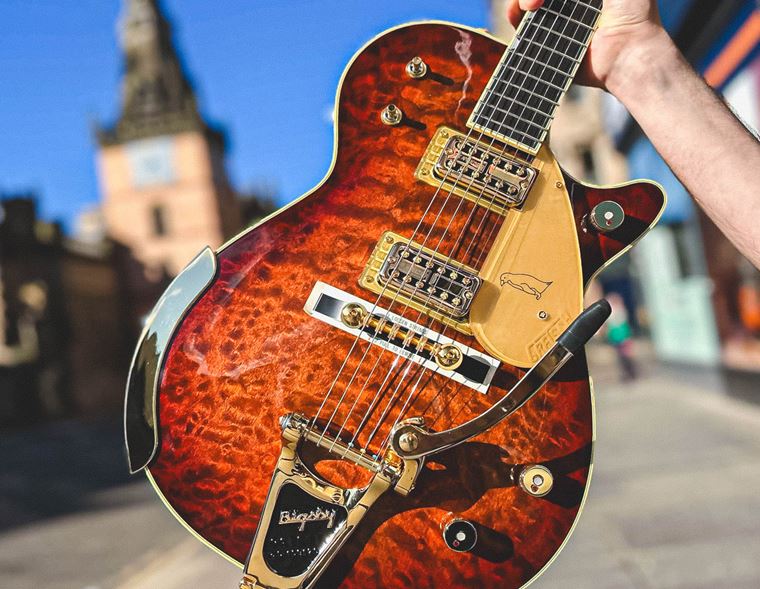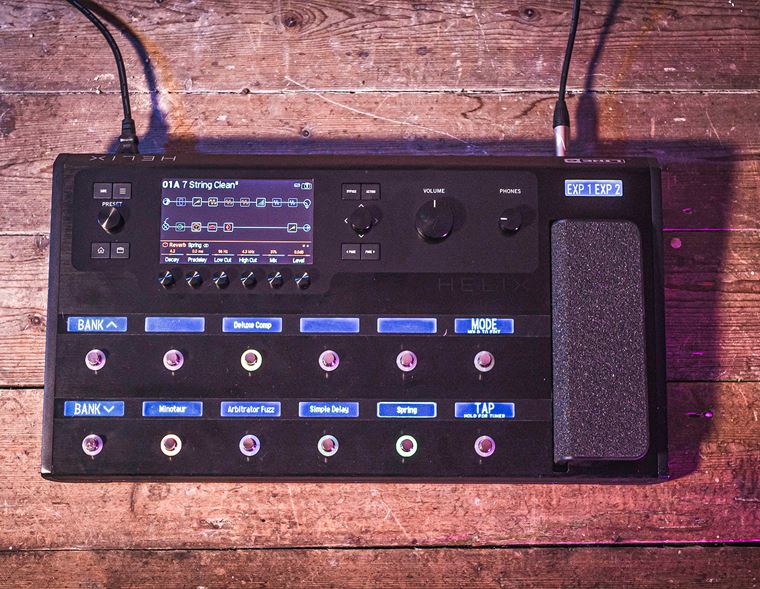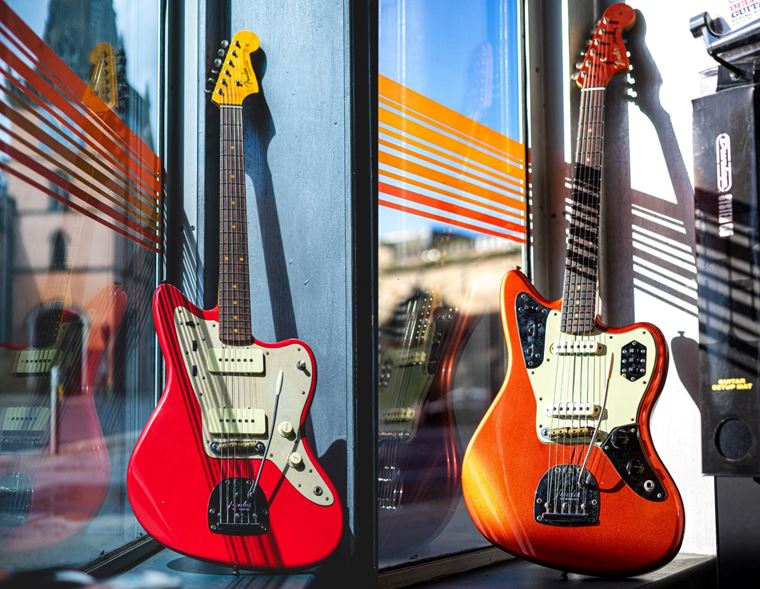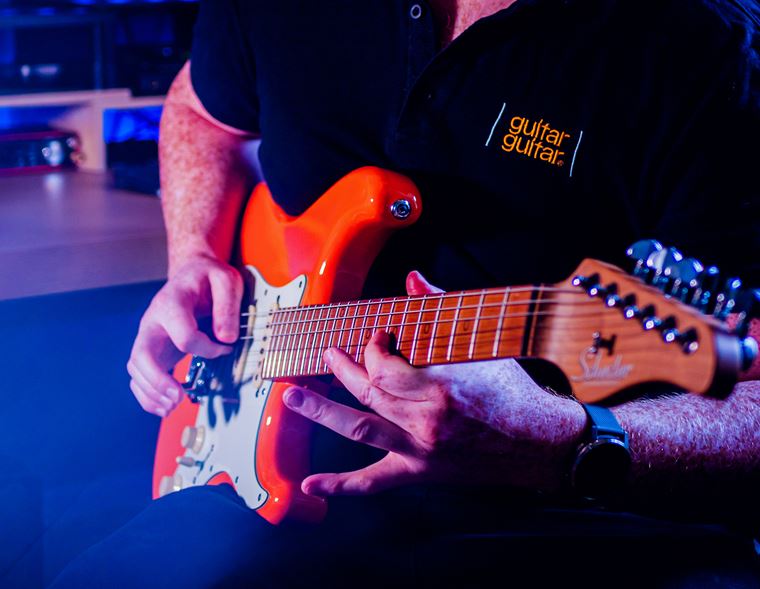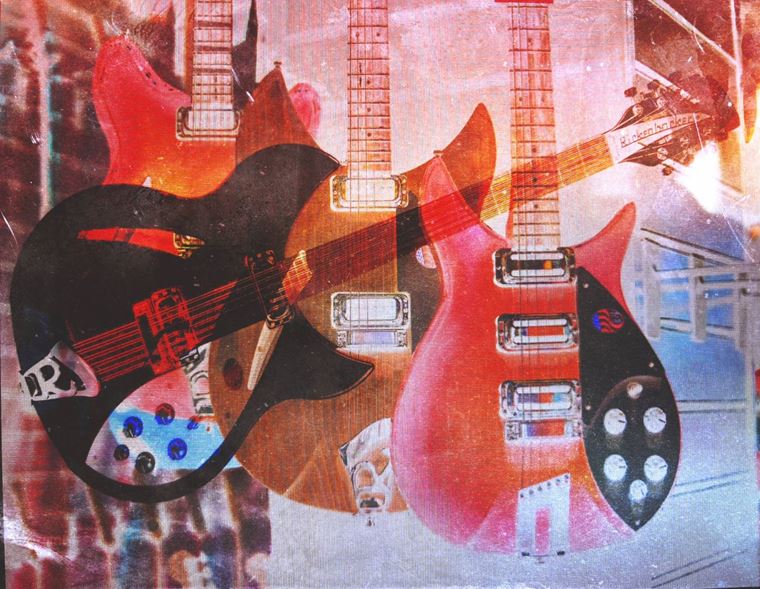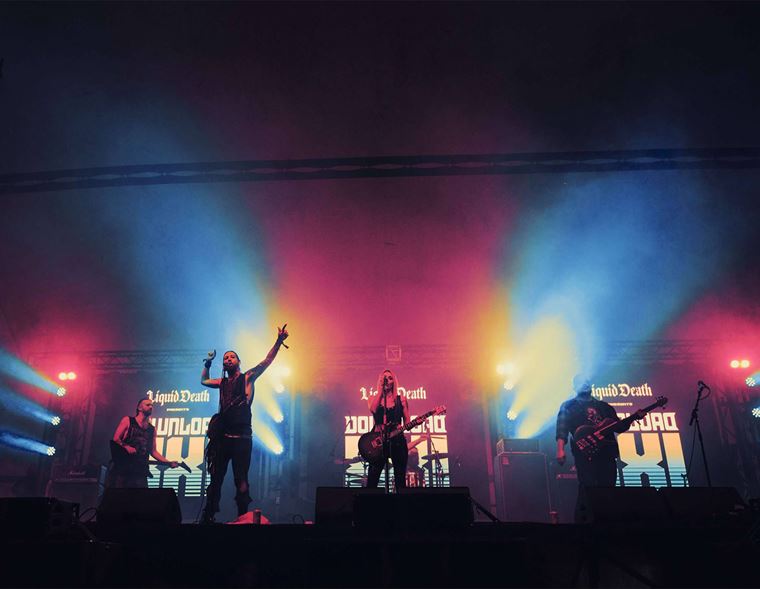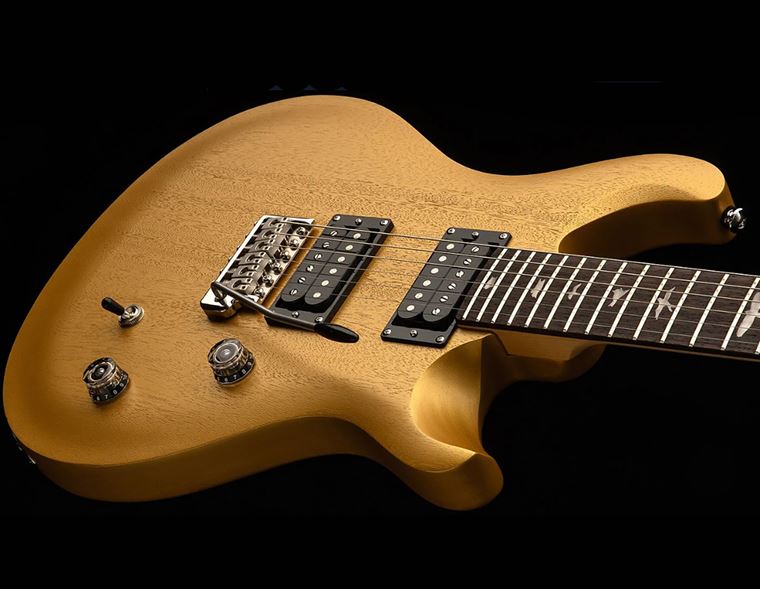Charvel: The Ranges Explained
Do you love flashy guitar playing? Is your idea of rock n roll melodic, hard-rockin’, dressed up in spandex and full of acrobatic guitar solos?
If so, then you must be a fan of Charvel guitars, right?

Charvel: California’s original custom guitar shop, and therefore also pretty much the world’s first custom guitar shop! Charvel’s significance in the story of the electric guitar is not a minor subject at all, and today I’ll look a little bit at that, but what I really want to check out with you are the main ranges of today’s Charvels. If the naming conventions confuse you a little then read on, because I’ll tell it to you straight. Line up some optional Ratt/Van Halen/Skid Row/Wasp or whatever other flamboyant rockers float your hair metal boat, and let’s do this!
Contents
- In the Beginning
- Charvel Today
- Shared Features
- Charvel 'Styles'
- San Dimas/So Cal
- DK
- Artist Models
- Japan and USA models
- Hard Rock Heaven
In the Beginning
Charvel and Jackson are two brands with a tightly entwined history. The Charvel brand started out 50 years ago in 1974. Wayne Charvel quit his job at Fender and started his own repair and refinish business, earning a name for himself with his custom finishes and aftermarket modifications. Business prospered and, at the behest of employee Grover Jackson, Charvel started putting together complete guitars and selling them.
Charvel fans will know that many emerging talents frequented the business, not least a certain Dutch boy with the surname Van Halen - but the business still ran into problems. Wayne Charvel sold his business to Grover Jackson, who continued and expanded the business. His own Jackson brand emerged a few years later, when Randy Rhoads collaborated on what became the RR guitar. It’s worth noting that Charvel were very much still a force throughout the early to mid 80s, despite competition from not only themselves/Jackson, but also Kramer, Ibanez, BC Rich and many other loud ‘n’ proud brands used by the Sunset Strip Hair Metal elite.

During the late 70s heyday though, Charvel were the go-to guys for modified Stratocasters. Whether altered Fender models or entirely new instruments made with Boogie Bodies parts (and Warmoth, DiMarzio etc), Charvel’s designs eventually became known as Superstrats, a term the industry uses today.
Charvel Today
Since 2002, Fender have owned the Charvel name, which is both suitable and ironic considering that Charvel started out as a Strat-modding business! Fender have played it smart by keeping a strongly authentic 80s flavour to their offerings. Charvel guitars are built for performance, for loud rock styles and they make no bones about it! The range has greatly expanded since the Pro Mod series really took off about 15 years ago, so it’s definitely worth me taking you through what’s out there and how to understand those naming conventions. I’ve sold a great many of these guitars in my time as a salesperson and indeed own a Charvel guitar myself, so I have a lot of experience with these guitars.
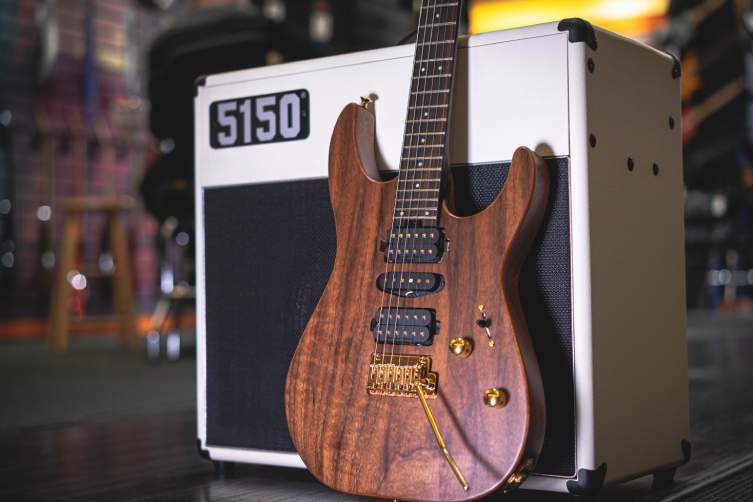
Shared Features
So, before I move on to the different ranges, it’s worth me highlighting the features that are shared by (pretty much) all Charvel models. There is definitely a ‘house style’ here, and I think that’s a real plus point: it strengthens the vibe of the brand, and it allows guitarists to create certain expectations. Here’s what you’ll find on all Charvel electric guitars:
- Famously good neck carves: Charvel is renowned for the comfort of their necks. Despite being slim, their ‘speed neck’ carve isn’t as skinny as you may think, and fits the hand very well indeed.
- Compound Radius fingerboard: normally a chord-friendly 10” down at the nut, flattening to a shredtastic 16” at the 22nd fret.
- Jumbo frets
- Premium brand pickups: most often Seymour Duncan sets, but other brands like DiMarzio are also used.
- Quality bridges: the locking tremolos are 1000-series Floyd Roses, not cheaper ‘Special’ units; the non-locking systems are top-class Gotoh 510 bridges.
Most models have locking Floyd Rose tremolos but Charvel are increasingly offering hard-tail guitars, so it’s no longer a given that they’ll have whammy bars! Also, the vast majority have good circuitry that includes coil taps and zero-load tone controls (when the tone is up at ten, it’s actually bypassed altogether), but again, this isn’t on every model as standard.
Charvel 'Styles'
You’ll notice that the term ‘Style’ is used a lot with Charvel. Style refers to body shape, basically. Style 1 is a Strat body and Style 2 is a Telecaster, though Charvel have refined their Tele to be noticeably less ‘Fender’ than it used to be!
So that’s it as far as the Styles are concerned, but as you know, there are other shapes and other names in Charvel’s catalogue, so let me just go through them with you now…
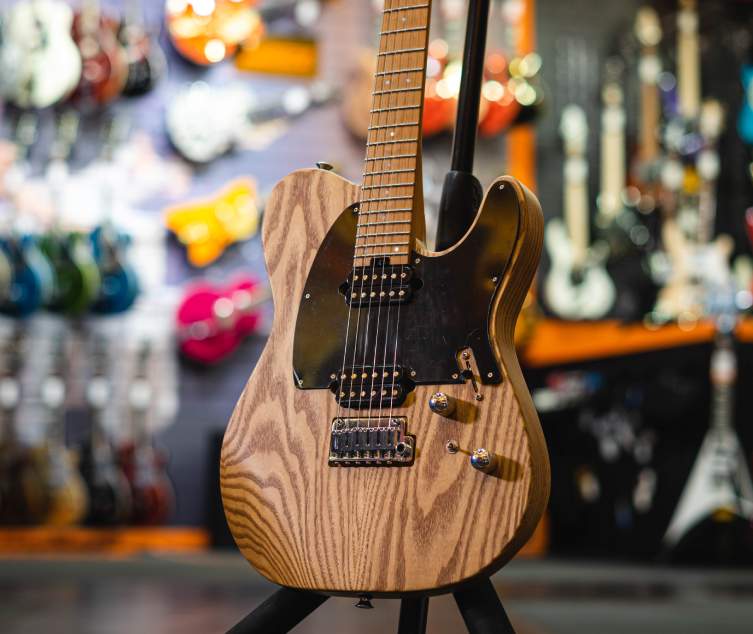
San Dimas/So Cal
The terms ‘San Dimas’ and ‘So Cal’ pop up often with Charvel. Of course, they are references to the Californian areas that relate to the company (‘So Cal’ is short for ‘Southern California’ and San Dimas is where Charvel started out, more or less), but they have specific meanings with the guitar range, too. San Dimas and So-Cal means basically ‘with or without a pickguard’: So Cal models have a pickguard and San Dimas examples do not. It does not matter whether the guitar is Strat shaped (Style 1, remember?) or not: it’s about the pickguard. (Note: for whatever reason, the Joe Duplantier signature guitar is named a San Dimas despite having a pickguard, but this is a lone exception).
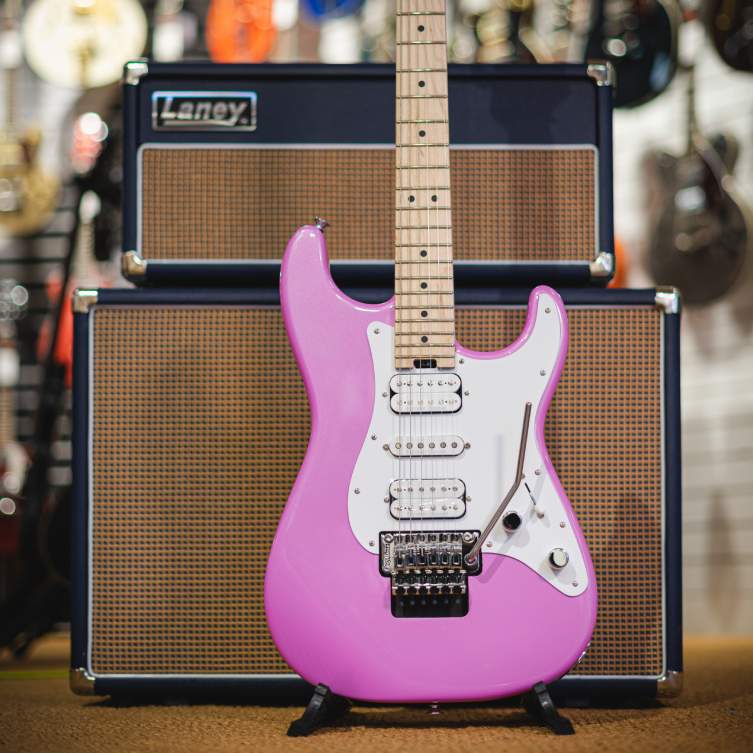
So, for example, a Charvel So Cal Style 1 would be a Strat-type guitar with a pickguard, a San Dimas Style 2 would be a Tele-style with no pickguard and so on.
To begin with, most So Cals and San Dimas guitars were equipped with two humbuckers, but the ranges have expanded to include H-S-S configurations, too. Still, there’s nothing more ‘Sunset Strip’ with a Superstrat with two humbuckers, if you ask me!
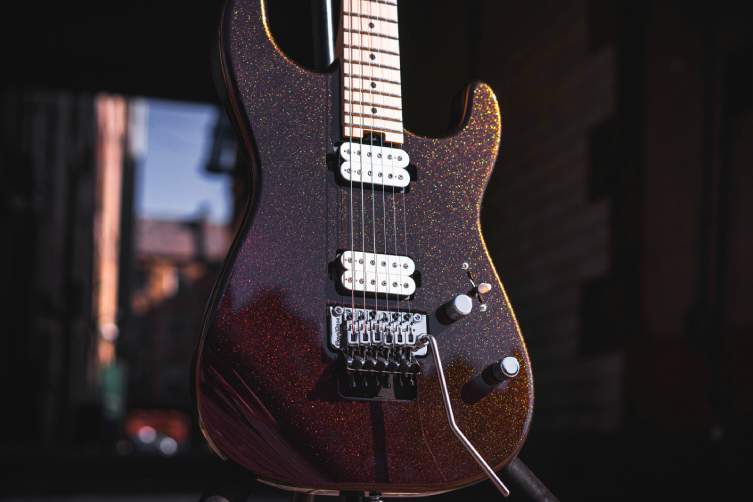
DK
DK is short for Dinky, another thing that Charvel shares with Jackson. This time, the name does refer to the body: Dinky bodies are smaller and ever so slightly sharper than Strat bodies. They are generally lighter in weight and have deeper cutaways (making the ‘horns’ more distinct) for even easier top-fret shredding.
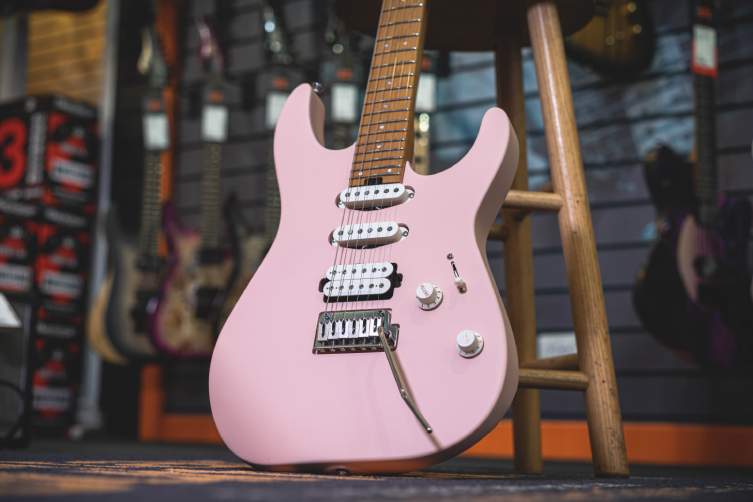
DK models are available in H-H, H-S-S and even S-S-S pickup configurations, though please note that the bridge pickups in the S-S-S styles are actually ‘rails’ humbuckers, so you still get that searing rock tone!
Whilst most San Dimas and So Cal guitars have Floyd Rose tremolos, the DK range is almost exclusively equipped with either a Gotoh 510 (a high quality, modern take on the Strat tremolo, thus non-locking) or a hardtail. DK models also often have 24 frets (you’ll see them names as DK24), which is two more than the more retro-correct San Dimas/So Cal.
The Charvel DK guitars seem to be looking to offer a ‘boutique’ experience, for session players and fans of luxury brands such as Suhr. These Charvels are a great price, whilst still being filled with top quality hardware. They aren’t cheap by any stretch, but they are within the range of most serious players, and those players will get themselves a ton of guitar for the money!
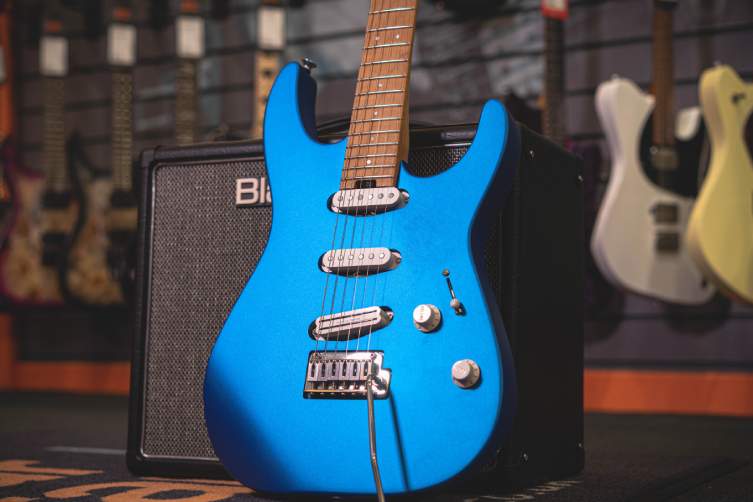
Artist Models
Charvel are big artist endorsers. This is in fitting with their star-studded reputation from the 80s glory days, when they were pretty much essential for inclusion in the hair metal scene. Of course, hair metal is less of a thing these days, and Charvel’s appeal is broader, especially when the So Cal and San Dimas instruments have permission to use proper Fender body and headstock shapes. Players of all stripes like the idea of an officially Fender-looking guitar that has a higher level of performance and a bigger sound. Who wouldn’t?
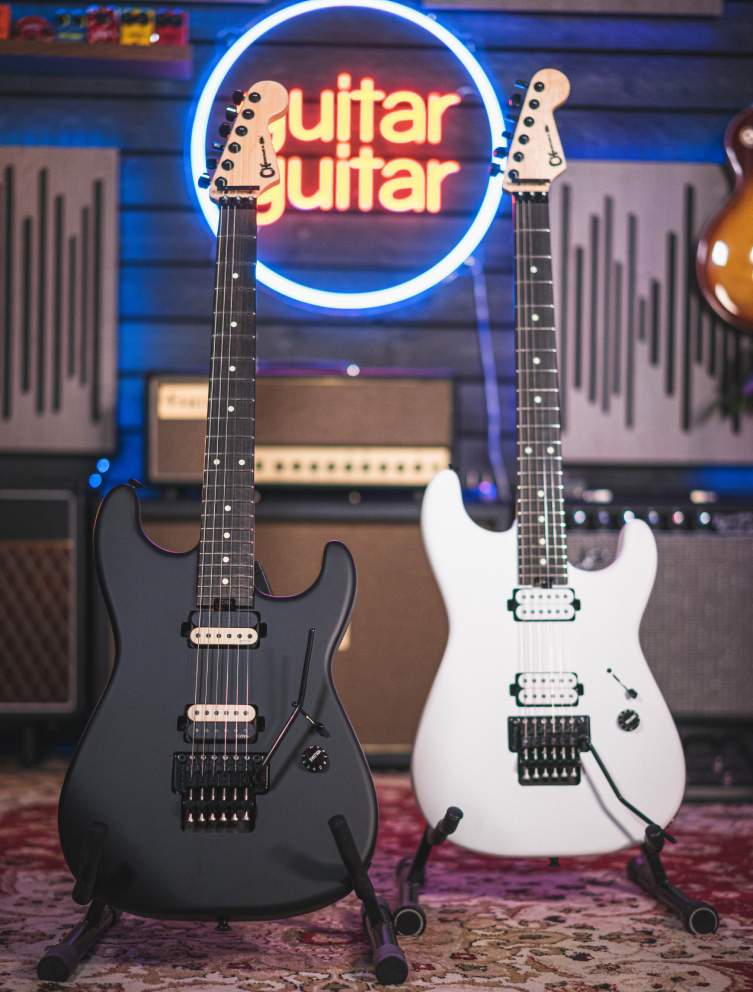
To this end, there are a great many Charvel Artist guitar models out there. There are some 80s metal guys in there such as Warren DeMartini and Satchel (I realise he wasn’t there for the actual 80s but he’s as ‘80s’ as they come!) but there’s also contemporary players like Gojira’s Joe Duplantier and Slipknot’s Jim Root. On top of those, Guthrie Govan - who can realistically claim to be one of the very best guitarists alive - chooses Charvel for his signature axe. Coming across from Suhr, that tells us a lot about Charvel’s quality levels.
Japan and USA models
Charvel do make more expensive versions of their guitars in both Japan and the US. To be honest, we don’t see too many of these over here, but the ones we have seen are highly impressive. Here’s the thing though: the Mexican-made Charvels (everything we’ve seen so far) are pretty exceptional already! It’s quite hard to overstate how far above their weight these guitars punch. The quality is outstanding.
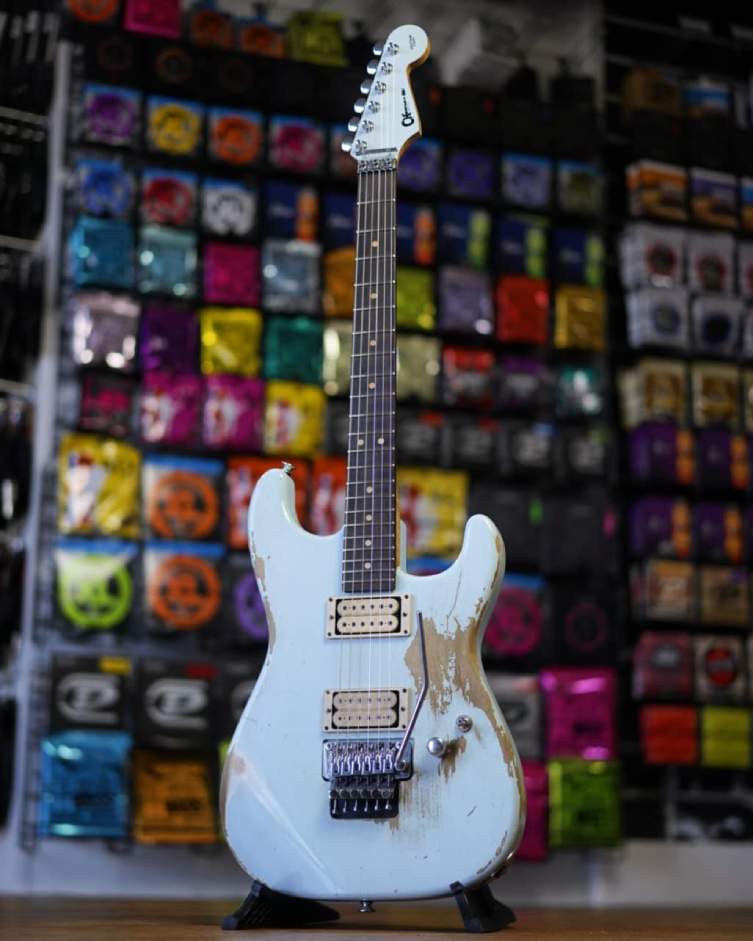
Hard Rock Heaven
Charvel guitars constantly refer to a glamorous time when rock was fun, loud and not very subtle. The brand references palm trees, big hair, fast cars and late nights. Selling dreams is all part of the appeal, but Charvel backs this up by actually being the pre-eminent custom/mod shop from Southern California who changed the whole scene for guitarists in the 80s.
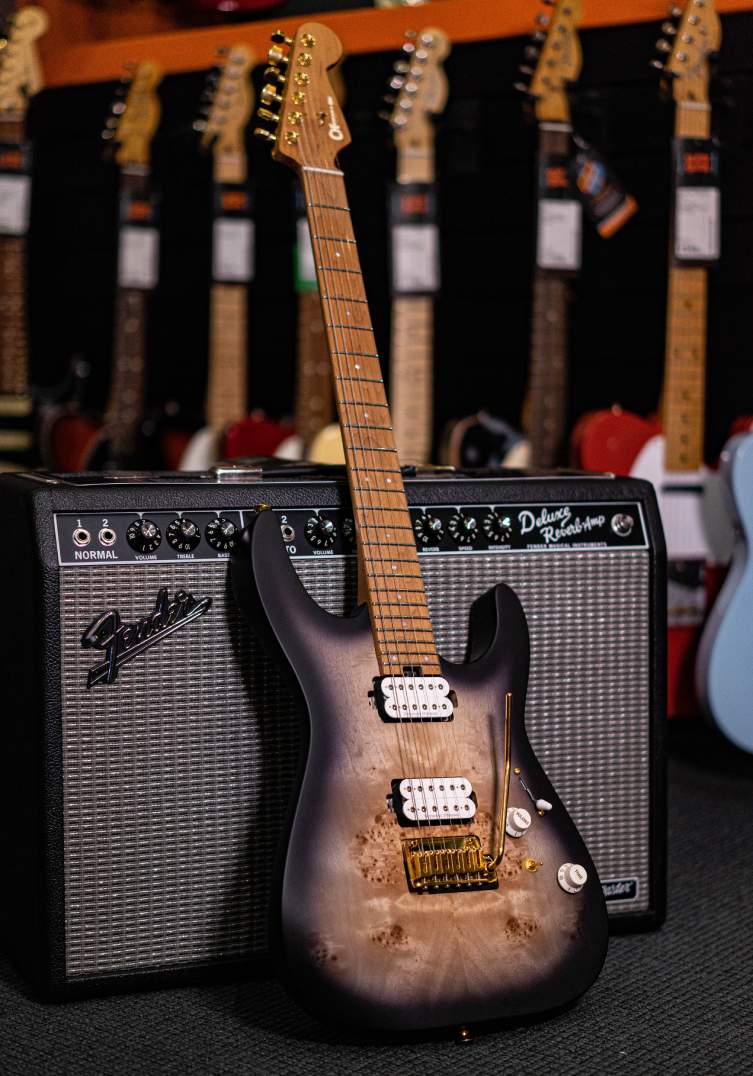
That’s all great, but the real clincher here is the fact that Charvel, under Fender’s custodianship, are backing up their loud legacy with guitars that literally out-perform everything else in their price bracket. That price bracket is attainable, too, and you’ll find a Charvel as sensible looking or as outrageous as you need it to be. Charvel might not be everything to every player (what is?) but they are everything to a lot of players! If you are demoing a range of Strat-types for your next purchase, throw a Charvel or two into your longlist and don’t be surprised if it becomes very hard to put them down!



